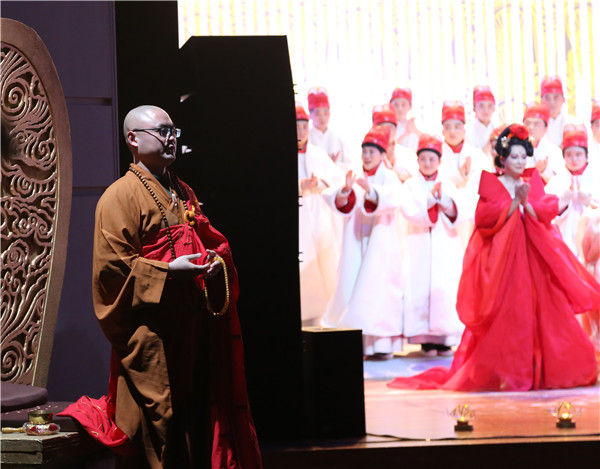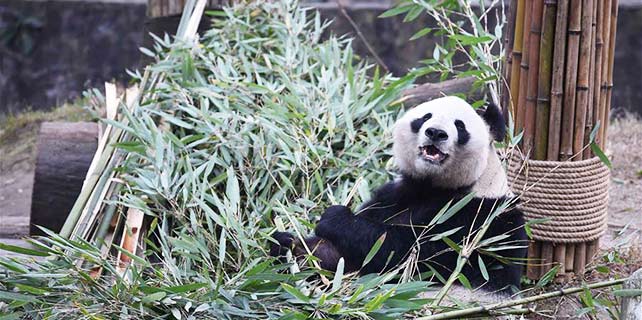Chinese opera celebrates Jianzhen's journey to Japan
 |
|
Master Renru from Yangzhou's Daming Temple, where Jianzhen was a disciple, accompanies the performance. [Photo by Cai Hong/China Daily] |
At 21, he traveled to Chang'an, China's capital during the Tang Dynasty (618-907), where he apprenticed under many well-known monks.
He became well-versed not only in Buddhism, but also in literature, art, medicine, architecture and sculpture.
With its prosperous economy and strong national power, the Tang Dynasty was a magnet for foreigners, and the relationship between China and Japan was close.
Japan sent regular delegations mainly consisting of monks, students and intellectuals to China in the hope of bringing back its rich and varied culture.
The opera starts with a Japanese monk, Yoei, who studied Buddhism in China.
Japanese Emperor Shomu, who ascended the throne in 724, devoted huge sums of money to create magnificent Buddhist temples and artifacts throughout the realm. During his reign, Buddhism virtually became Japan's official state religion.
Bearing the emperor's edict, Yoei invited Chinese monks well-versed in Buddhist teachings and precepts to teach in Japan. More importantly, the emperor wanted them to establish an authentic Buddhist Ordination platform, which was absent in Japan.
In 742, Yoei visited Yangzhou where he implored Jianzhen to lecture in Japan.
Despite five failed attempts, the last of which left him blind from an infection, Jianzhen's resolve to go to Japan did not die.
In 753, the strong-minded monk joined a Japanese emissary's ship heading for Japan. After several months, the group finally landed at Kagoshima, the southwestern tip of Kyushu Island, on Dec 20, 753.









